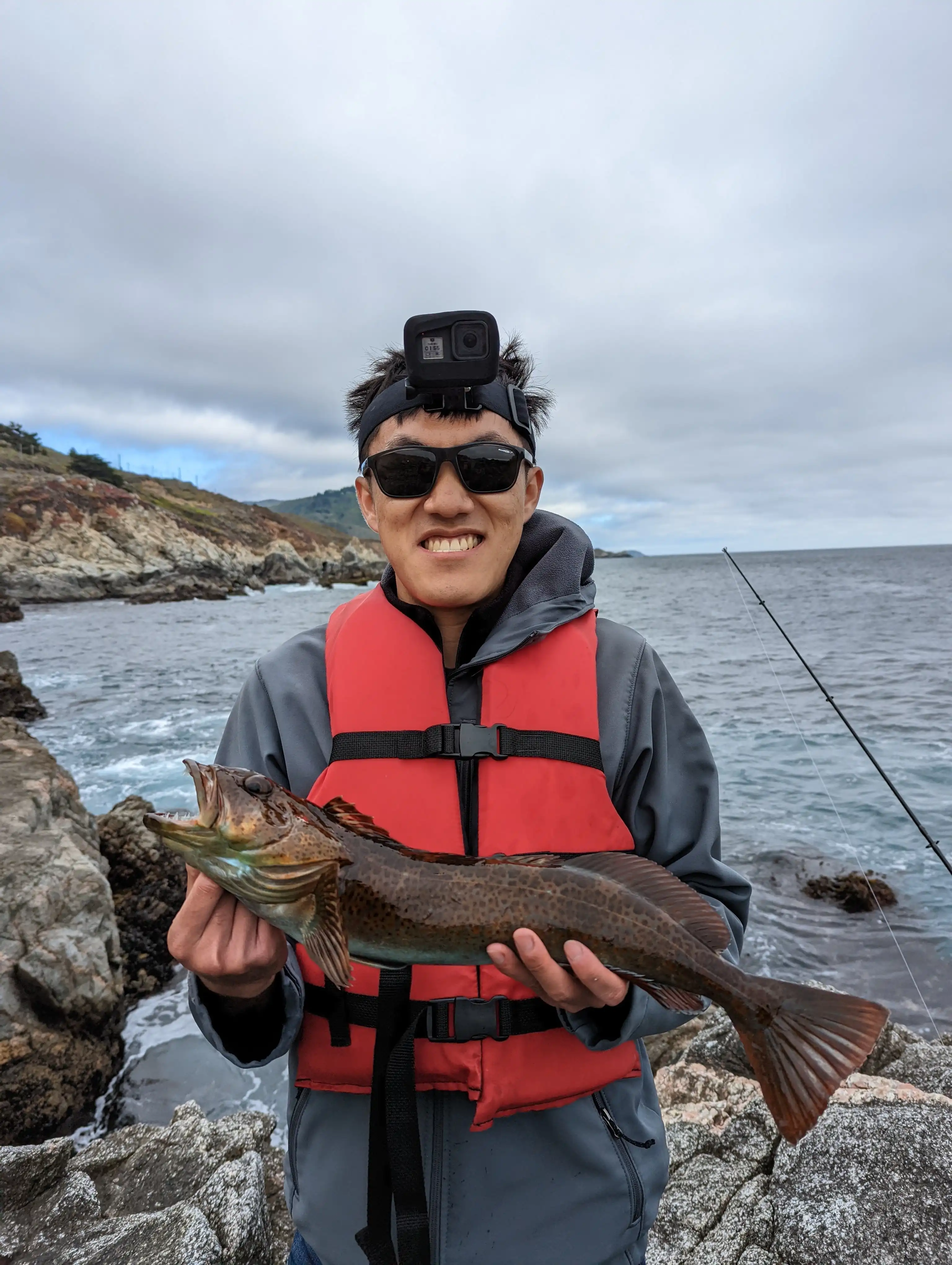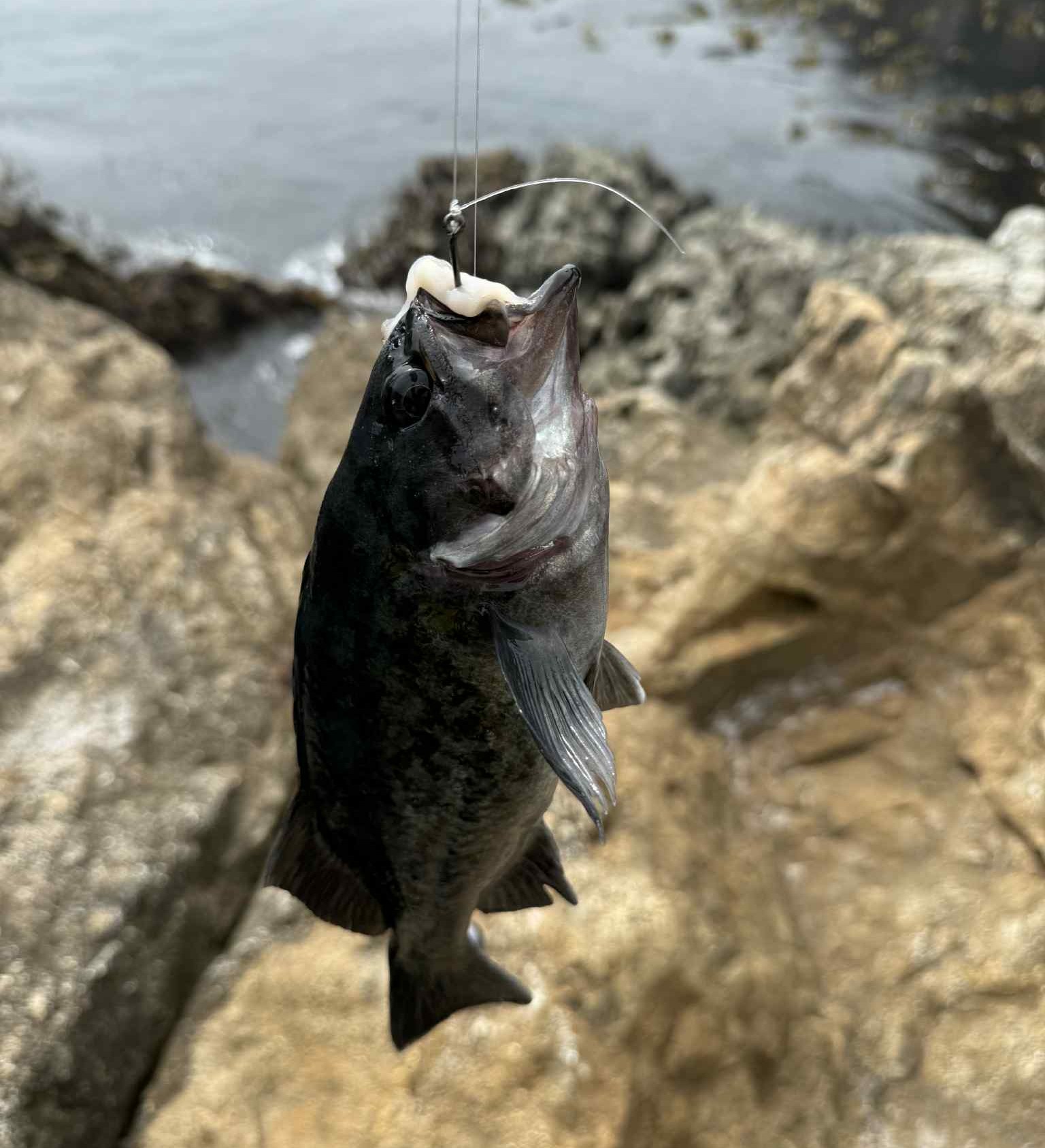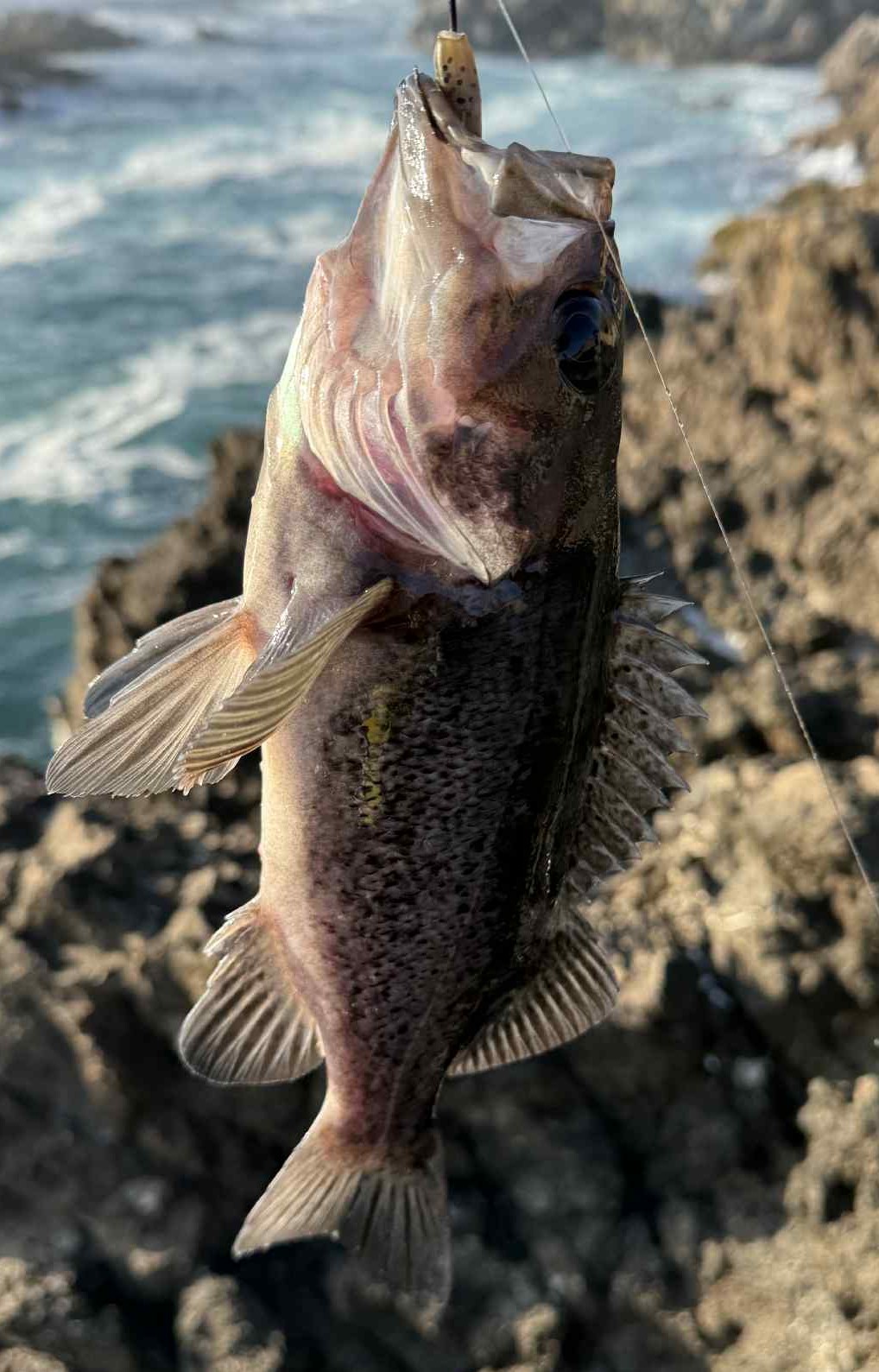Fishing the Monterey Cliffs
South of Carmel, Highway 1 follows a set of beautiful rocky cliffs right by the Pacific Ocean. Many turnouts provide easy access to fishable water, which is often quite deep! This brings a larger variety of rocky-shore species within reach of shore fishermen.
About this Stretch of Coast
Always keep your eyes on the ocean! Like many regions of the coast by the Pacific Ocean, big waves can be an unpleasant surprise for people foraging and fishing, and many people have lost their lives when swept away by a sneaker wave. Always check the wave forecast, and be safe. In addition, many of the rocks here can be quite slippery, so take your time when climbing these rocks to get to fishing spots.
The great part about this set of coast is that you have very easy access to deep water. Right by your feet, the cliffs drop down anywhere between 10 feet to 50 feet, with even deeper water within casting distance. What that means is a lot of fishable structure, and lots of fish! I’ve caught many nice-sized cabezon and lingcod here from shore - for whatever reason, the close proximity to deeper water means that these larger species are more plentiful.
Like the Santa Cruz coast or the San Mateo coast, a sure-fire strategy to catching fish is dropping a piece of squid or shrimp by visible structure near shore. Look for spots where the water is deep and calm, thanks to the protection of an overhanging rock or cliffside - very often a feisty black-and-yellow rockfish is lurking in the cracks and holes in the rock.

Often, there are kelp beds within casting distance from shore. Tossing some bait towards these marine forests can often yield great results for rockfish and perch. In addition, if you’re lucky, schools of nice black and blue rockfish can make their way within casting distance. Fishing a swimbait, or some squid under a bobber such that the bait is in the middle of the water column can be killer for these tasty fish.
One con to the fishing here is that the rocks here are very sharp. If you’re not careful, the water-honed edges will easily slice through fishing line - I typically use 50 lb braid, and I’ve lost my tackle plenty of times from just setting my rod against a rock for a few minutes. There are also lots of snags - namely, it’s pretty easy to get your line tangled around the plentiful kelp stalks. So make sure to bring a lot of spare weights.

Notes
Some of these spots have been hit quite hard in recent years, and as a result fish sizes as well as catch rates have gone down significantly. Do your part for future generations, and only take home the fish you’ll actually use and eat yourself.
A common catch here are black-and-yellow rockfish, similar to other rocky-shore fishing spots in the rest of the state. If you intend on keeping the fish you catch, keep in mind that this particular species of rockfish are classified as high in methylmercury and PCBs, and you should limit your consumption if possible.
Check out my Bay Area rockfish fishing guide.
Recommended Gear
Berkley Gulp Sandworms
Berkley Bonefish Ribbed Swimbait
Keitech Swimbait
When fishing the rocks, there is always a surprising amount of current, so you’ll need some heavy weights. I usually use anywhere from half an ounce to four ounces for my rigs. You’ll also snag and break off a lot, so make sure to bring a lot of spares. I’ve listed the weights I use below, in order of preference.
Cloth Bags
Ultra Steel Bullet Weights, 3/4 ounce
Lead Sinkers, 2 ounces
Recent Reports
A Wavy Labor Day in Carmel
01 Sep 2025
Finally made it down to Carmel! My friend and I left home at around 8am, and a couple of coffee-fueled pitstops later, we made it to our first fishing spot at 10am. I haven’t been back to this spot in a little, but it seems like a lot of the cliff has somewhat eroded, making it a bit more dangerous to clamber down (if you’re ever going to go rock fishing, make sure you don’t go alone). We were hoping that this roadblock would decrease the fishing pressure, but it did not seem to translate to better fish catches — I couldn’t get away from tiny baby blue rockfish, except for a single pan-sized one that I guess was the king of the pack:
 |
 |
|---|---|
| A dink blue rockfish | The head honcho |
Since the action was pretty quiet in terms of bigger fish, we decided to switch spots. Unfortunately the water was fairly rough today, so combined with the tide that had been rising all day, our options were somewhat limited in terms of safe places to fish. We eventually ended up at a spot I had checked out a couple weeks back with another friend, that has a nice platform about 15 ft off the water that provides really nice protection of the waves. Here, we loaded up on quite a few small-to-medium blue rockfish that were eager to hit a Z-Man Slim SwimZ — nothing to write home about, but still some good fun. I also caught one decent black rockfish working the Z-Man on a dropshot rig.
 |
|---|
| The one non-blue rockfish of the day |
The Z-Man did well today. I don’t think I lost a single one of the plastics today despite the large number of bites, except to snags that took the rest of my rig too. At least for now, I think I’ll stick to Elaztech for any future soft plastic purchases…
Some of Our Adventures






